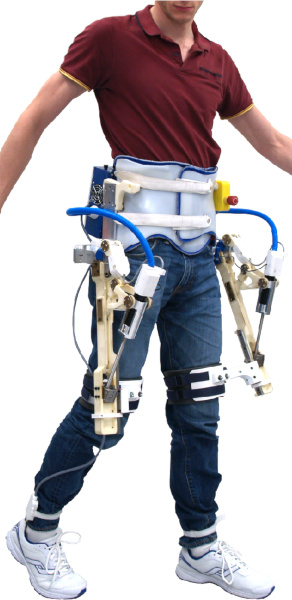 |
The Hip ball-screw orthosis (HiBSO) is a partial lower-limb exoskeleton that assists the flexion-extension of the hip joint. It is designed to enable the elderly to walk longer, and help them for the tasks that require more strength (e.g. standing-up, climbing stairs, etc.).
With a total weight of 9 kg, its battery offers an operating time of about 90 minutes of continuous walking. Contact: Romain Baud Mechanical designHiBSO is mainly made of aluminum and laser-sintered plastic parts. Its main novelty comes from its kinematic, which offers a variable gear ratio, that depends on the hip flexion angle (maximum torque when sat, high dynamics when walking). The transmission mechanism is very efficient and passively backdrivable. InstrumentationHiBSO was initially only equipped with encoders on the motors. It was later extended with inertial measurement units in the back and the ankles, torque sensors in the joints, and soft load cells in the shoes. ControlThis exoskeleton can be controlled with an algorithm relying on adaptive frequency oscillators (AFO) and a fixed torque pattern. It can also make use of the sensory information of the load on the feet to use a simplified reflex controller. Related publications
|